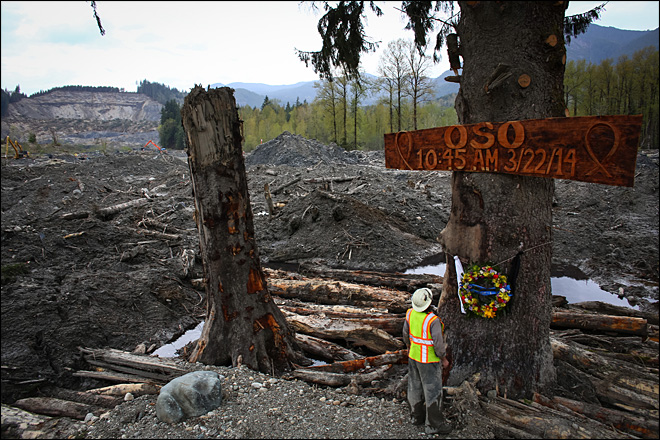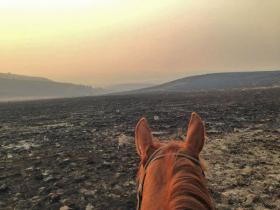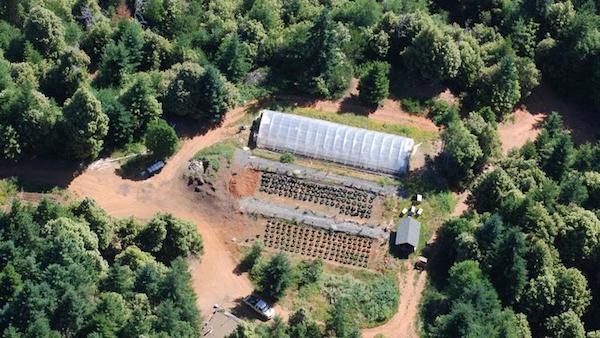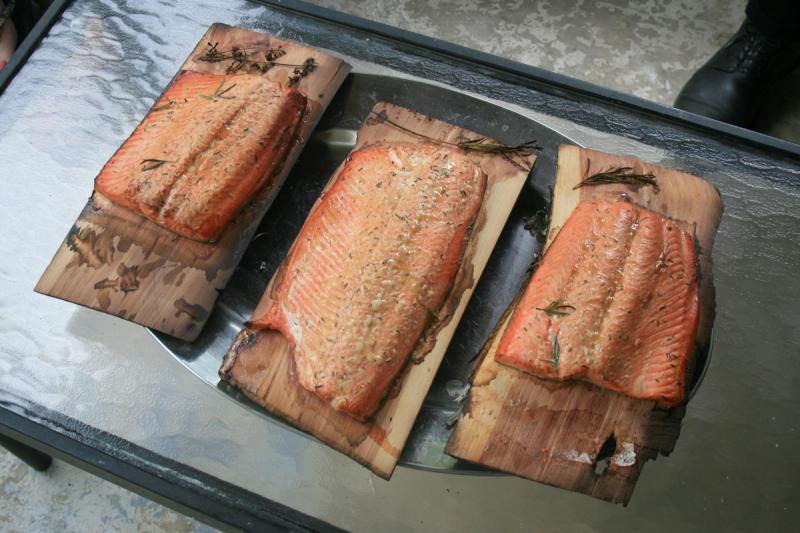Author: Kim Kalliber
Alabama To Help Fight NW Fires
Source: Associated Press
Alabama Forestry Commission officials say firefighters from throughout the state are helping respond to wildfires in Oregon and Washington state.
Officials said in a release Tuesday that five firefighters have been sent to tackle wildfires in Oregon and two have been sent to battle a blaze in Washington State.
Alabama State Forester Greg Pate says Alabama Forestry Commission firefighters accepted a 16-day assignment through an agreement with the U.S. Forest Service and have previously helped fight western wildfires in recent years.
Forestry officials say Alabama has seen measurable rainfall this summer while many western states are faced with drought conditions. Officials say the dry conditions allow wildfires to quickly become difficult to control.
Sheriff’s office: Last body in Oso mudslide found

Source: KOMO News
EVERETT, Wash. – The Snohomish County sheriff’s office says search and rescue personnel believe they have located the last body from the deadly March 22 mudslide that killed 43 people at Oso.
Although the search for victims ended in April, workers have been screening debris and watching for the body of 44-year-old Molly Kristine “Kris” Regelbrugge.
Details were expected to be released at a news conference Tuesday afternoon in Everett.
Her husband, Navy Cmdr. John Regelbrugge III, also was killed in the slide that hit their home. His body was one of the 42 recovered earlier.
The discovery came on the same day that a team of scientists released the results of a report into the causes of the deadly mudslide.
The report says intense rainfall likely played a major role in triggering the slide, but that many other factors also contributed, such as previous landslide activity that also weakened the slope that collapsed.
The team says the slide, the deadliest in U.S. history, occurred in two major stages. A fast-moving mudflow remobilized a 2006 slide, bringing down old slide deposits across the valley. Another slide followed a few minutes later.
The report makes several broad recommendations that include doing an examination of landslide risks and communicating the information to the public.
The National Indian Education Association Returns to Alaska
The National Indian Education Association will be returning to Alaska for their 45th Annual Convention and Tradeshow. The four-day Convention will take place at the Dena’ina Civic and Convention Center in downtown Anchorage from 15-18 October 2014.
The 2,000 teachers, school administrators, tribal leaders, and higher education faculty expected to attend NIEA 2014 will have daily agendas packed with more than 100 workshops focusing on advancing educational programs for Native students.
NIEA President Pamela Agoyo noted that, “Being home to 229 federally recognized tribes, Alaska is rich in Native history and educational leadership at the tribal level, which makes it the ideal location to host our 2014 annual conference.”
Native education stakeholders incorporated NIEA in 1970. The membership-driven organization has since been dedicated to the mission of advancing quality education for all American Indian, Alaska Native, and Native Hawaiian peoples. The Association’s 2,500 members work each day to strengthen Native educational opportunities while also preserving the unique cultures and languages of Native Americans.
For more information about NIEA 2014 or to inquire about attending the convention as a member, sponsor, or tradeshow exhibitor, please visit their website at www.niea.org
Raid Targets Illegal Marijuana Farms Sapping Yurok’s Drought-Plagued Water Supply
The drought in California is exacerbating the effect that illegal marijuana farms have on the Yurok ’s water supply, and on July 21 federal and state agencies raided several properties on or adjoining the reservation along the Klamath River.
The raid was conducted at Yurok officials’ request, the Los Angeles Times reported, and involved the California National Guard, the Bureau of Indian Affairs, Bureau of Land Management, California Department of Justice’ North State Marijuana Investigation Team, and Yurok police. Operation Yurok, as it was called, was coordinated by the Humboldt County Sheriff’s Drug Enforcement Unit.
The Yurok are not the only ones contending with the effects of illegal pot grows on their lands. The Hoopa Tribe has been actively combating incursions as well.
RELATED: Hoopa Tribe Helps Destroy 26,600 Marijuana Plants Invading Sacred Land
Pot-Farm Raticide May Be Killing Spotted Owls; Hoopa Tribe Investigates
Even without the ongoing and worsening drought, the farms put a strain on Yurok life in a number of ways. Rat poison kills sacred fish and other animals, lower water levels become too warm and unhealthy for salmon to spawn in, and water pressure is just about nil on the reservation.
“They’re stealing millions and millions of gallons of water, and it’s impacting our ecosystem,” Yurok Tribal Chairman Thomas O’Rourke said during the raid, according to the Los Angeles Times. “We can no longer make it into our dance places, our women and children can’t leave the road to gather. We can’t hunt. We can’t live the life we’ve lived for thousands of years.”
Not only that, but access to one sacred ceremonial site is blocked by a pot farm, O’Rourke told the Los Angeles Times. And growers have become brazen enough to trundle supplies to and from the farms in broad daylight.
“We are coming close to being prisoners in our own land,” O’Rourke said. “Everything we stand for, everything we do is impacted.”
Read Massive Raid to Help Yurok Tribe Combat Illegal Pot Grows
Read more at http://indiancountrytodaymedianetwork.com/2014/07/21/raid-targets-illegal-marijuana-farms-sapping-yuroks-drought-plagued-water-supply-155978
Wildfire Season Starts Early And With A Vengeance
So far, more than 150 homes in Washington state have been destroyed in what veteran firefighters are calling the worst fire season in decades.

In neighboring Oregon, firefighters are stretched thin by more than a dozen blazes burning at once.
Veteran firefighter Al Lawson came to a community meeting in central Washington to meet with residents displaced by the raging Carlton Complex Fire. It’s among the largest wildfires in the state’s recorded history.
“In my 30 years, I’ve never seen fire behavior like this,” he said. “Nothing to compare.”
Governor Jay Inslee toured the devastation over the weekend. He called it an unprecedented firestorm.
“Our state is stretched beyond imagination,” he said.
Inslee says the fact that it’s only mid-July is an ominous sign.
“Typically the fire season doesn’t really get going until August,” he said. “So we have at least two more months in the fire season and we have already burned twice as many acres as the average.”
Oregon has been spared the same level of devastation in terms of lost property. But the Oregon Department of Forestry says so far the sheer number of acres burned this summer is seven times more than a typical fire season.
On a more positive note, the agency’s Cynthia Orlando says cooler weather for the next few days could help slow things down.
“We’re getting a lit bit of a respite but you know, everybody’s on alert here,” Orlando said.
Temperatures are expected to soar back into the 90s by the end of the week.
Wash. To Host First Public Meeting On Inslee’s Fish Consumption Rate Proposal
Washington is slowly moving ahead with a long-delayed plan to update its water quality rules. Tuesday’s will be the first public meeting on Gov. Jay Inslee’s proposal to dramatically increase the fish consumption rate, which determines how clean discharged water must be. But some say the proposal doesn’t go far enough.
The governor’s plan would increase the fish consumption rate to about a meal a day, rather than a meal a month. It would increase the current rate of 6.5 grams per day to 127 grams per day. That’s the same rate recently adopted by Oregon, which has the strictest rate in the country.
“Well, yes, but it’s important to remember that that’s just one part of this equation,” said Chris Wilke with Puget Soundkeeper Alliance, one of four groups that sued the federal government last year to force it to make the state comply with the Clean Water Act.
Wilke says the plaintiffs are glad to see a more realistic fish consumption rate. But at the same time, he points out that Inslee’s proposal also lowers the bar on the allowable risk for cancer by a factor of 10, from one in a million to one in 100,000.
“It appears the state has kind of engineered the standards to come out where they want them to be or where might be acceptable to business interests,” Wilke said.
The state Department of Ecology says the Governor felt the compromise is necessary, because businesses have warned tightening the standard too much would prompt them to move jobs elsewhere.
And instead of just cleaning up the aftermath, Inslee is pushing for additional policies to discourage use of the chemicals in the first place, to “shift people away from using these kinds of things that are so problematic for the permit holders,” said Carol Kraege, who leads the state Department of Ecology’s toxics reduction efforts.
But the plaintiffs who brought suit for cleaner water say such policies might not make it through the Legislature. And they say a similar compromise was recently put forward in Idaho and rejected by the Environmental Protection Agency.
EarthFix Conversation: Puget Sound Whales For Sale

By: Ashley Ahearn, KUOW
The resident killer whales of Puget Sound are an endangered species. There are about 80 of them left.
But there was a time, not too long ago, when people were catching these whales and selling them into captivity.
In the 1960s and ‘70s an estimated 35 orcas were taken from Puget Sound. 13 were killed in the process.
Sandra Pollard has documented the history of orca capture in Puget Sound in a new book: Puget Sound Whales For Sale: The Fight To End Orca Hunting.
She spoke with EarthFix’s Ashley Ahearn about this dark period in orca history.
Ashley Ahearn: Let’s go back in time here a little bit, why did people start catching orcas?
Sandra Pollard: I think there was probably an element of the trophy hunter there but also they didn’t like whales very much in those days, particularly the orcas, because they thought they were taking the salmon. And in the ‘60s the Navy used them as target practice for strafing runs and many of the whales that eventually turned up in marine parks had bullet holes in them.
So they were not respected. They were disliked. The people who did revere and respect them were the Native American people and they’re on their tribal crests and they looked up to them and they still do.
Ahearn: So it’s been almost 50 years since the first captive orca arrived in Seattle. Can you tell me about that whale and what happened, what was his story?
Pollard: That’s correct. The first whale was called Namu and a man called Ted Griffin had an aquarium down in Seattle, the Seattle Marine Aquarium, and he’d always wanted to have a killer whale and two whales actually washed up in British Columbia at Warrior Cove. They got caught in nets when a couple of fishermen abandoned their nets to get away from a storm. So they had two whales up there. One a bull and one a calf. The calf escaped but unfortunately the bull did not.
So Ted Griffin flew up to Warrior Cove and secured the whale, but then of course, he had to get it back to Seattle. So, with the help of fishermen, he built a three-sided pen with a net on one side and steel bars on the other and they brought Namu, as he was then called, down to Seattle in that three-sided pen. That was a 400-mile journey which took 18 days, and made a glorious entrance into Seattle to go-go dancers and great jubilation. But at the same time there were people there who didn’t like what they were seeing and there were protesters waiting with “Save The Whales” signs even back then. But that was how it all started.
Ahearn: And there was a Canadian biologist who went along for the trip and he describes the separation of Namu from his family. Can you read that section?
Pollard: Yes. The biologist was called Gil Hewlett and this is what he had to say.
“When they are within 300 yards of the pen, Namu lets out a terrifying squeal, almost like a throttled cat. He leaps out of the water and crashes against the left corner of the pen. There is terrific thrashing and he is making all kinds of sounds. Then they are there again, the same family of the cow and two calves. They came straight up behind the pen to about 10 feet away, tremendous squealing going on. Namu seemed to lose all coordination in the pen. He kept getting swept against the cargo net and swimming vigorously forward. The family unit circles around towards the end of the pen.”
Ahearn: Now the family unit follows him a certain distance but then they stop. What happens?
Pollard: Yes the female and the two calves follow him to an area called Seymour Narrows up in British Columbia near Campbell River and then they gradually fell back. And it has been found that the Seymour Narrows area is really the dividing line between the northern residents and the southern residents.
Ahearn: What was the public sentiment around orcas that were being captured and taken into captivity for entertainment? How were people responding at the time?
Pollard: For the most part I think they were thrilled to see this exotic creature up close and personal and impressed by the abilities it had because they are such intelligent creatures that they learn tricks for food. But I think the general consensus was more one of wonder. But there were still those creeping suspicions that this wasn’t right.
Ahearn: It seems that in terms of public sentiment changing about orca capture the most notorious, the most well known capture, occurred in Penn Cove on Whidbey Island in 1970. Can you tell me what happened on that day?
Pollard: That was on either August the 7th or 8th, 1970 and the three pods of Southern Resident orcas known as J,K and L were going north, probably back to the San Juan Islands, and Ted Griffen and Don Goldsbury and the capture team they went out in boats and started to turn them back towards Whidbey Island and the idea was to drive them into Holmes Harbor, which is a sheltered place on Whidbey Island. And they used seal bombs, which are loud explosive devices. And they also used buzzing aircraft.
But they didn’t get them into Holmes Harbor. The whales are very clever and they brought in their diversionary tactics. The mothers and the calves headed up for Deception Pass and the males did a decoy action by going in the opposite direction. But it was too late. The boats outstripped them and they turned the mothers and the calves back and drove about 100 whales into Penn Cove on Whidbey Island. And they were held there in nets until they went through the selection process, which would be to corral the mothers away from the calves and split them up, because it was the calves that they wanted. They were smaller. They easier to transport. And they were easier to train.
The capture net pens in Penn Cove on Whidbey Island 1970.
And the rest of the whales that were turned away that they didn’t want, they stayed around. They’re a family unit. They’re highly social and they stay together for life. There is no dispersal, other than by death or human interference. So those whales stayed with the whales in the capture pens and eventually seven whales were selected for marine parks, which were already waiting around the world. Four calves were drowned and there also had been a female who had died. She had charged the net to try to get to her calf, so she also died during the process, as well. And this caused an uproar and a lot of feeling against the captures. And that started to be the turning point.
And the last whale to be taken from Penn Cove was Lolita and she remains at the Miami Seaquarium where she has been for 44 years.
Ahearn: Sandra, when did we stop taking orcas out of Puget Sound to sell to marine parks around the world?
Pollard: We stopped doing that in March, 1976 when six orca were driven into Olympia and the seal bombs were used and it caused a great hue and cry. There were protesters on the water. There were protesters on land. And there was a lawsuit, as well. So after a couple of weeks there were only two whales left because three had escaped. One had been turned away because it was too big and the two whales were turned over to the University of Washington to be radio tagged and tracked for as long as possible. I don’t think they were tracked for very long, but there was a lawsuit which stopped the captures in Washington state and Seaworld were not able to come back into Washington state and capture orca again and that was the last capture in Washington state.
Ahearn: So really the end of a very dark era for the orca in Puget Sound.
Pollard: It certainly was. And one wonders if that hadn’t happened how much longer the captures would have continued and how many more whales we would have lost.
Sandra Pollard is the author of Puget Sound Whales for Sale: The Fight To End Orca Hunting. You can find out about upcoming stops on her Northwest book tour here.
Be aware of lake risks while enjoying summer swimming
Dr. Larry Nyland appointed Interim Superintendent
School Board votes to name longtime educator to replace José Banda; will conduct full search with community engagement this fall for permanent Superintendent
Distinguished local superintendent Dr. Larry Nyland was appointed Interim Superintendent of Seattle Public Schools by the School Board during a special meeting Friday.
The highly respected Dr. Nyland retired in June 2013 after nine years as the Marysville School District Superintendent, where he transformed a challenging climate. When he began in 2004, a 49-day teachers’ strike had resulted in declining enrollment, graduation rates were low and the community hadn’t approved a school bond issue in 16 years.
Through strengthening relationships with teachers and staff, community engagement with families, building partnerships with the business community, local service organizations and the Tulalip Tribes, he was able to rebuild the Marysville district into one that saw stabilized enrollment after the strike, win voter approval for a $118 million bond issue for new schools in 2006 and work with staff to raise graduation rates by 22 percent.
In 2007, Dr. Nyland was named Superintendent of the Year by the Washington School Administrators Association, and he was also a finalist for National Superintendent of the Year. The School Board of Marysville was named Board of the Year in 2012.
[Nyland headshot 2014]
Dr. Nyland replaces outgoing Superintendent José Banda, who on Thursday was appointed Superintendent of Sacramento City Unified School District. Seattle School Board members said they will soon outline a recruitment plan for hiring the next permanent Superintendent, a process that will include community engagement. Dr. Nyland will start by Aug. 1, and the Board is expected to ratify his contract at the Aug. 20 meeting.
“We feel deeply honored and privileged that Dr. Nyland will be stepping in as interim Superintendent,” said Board President Sharon Peaslee. “We hear from people who worked with Dr. Nyland that he is a brilliant visionary and the most outstanding superintendent they have ever known. One of his many strengths is bringing people together around highly effective improvements and solutions.”
This is not Dr. Nyland’s first interim appointment. He served as Interim Superintendent for the Shoreline School District in 1997, where he was appointed during a difficult time and helped renew trust and build relationships with labor groups, won voter approval for renewal of a local tax initiative to support schools and created a district focused on school improvement around literacy.
Before that, he was the Chief Academic Officer and Human Resources Director for six years at Highline Public Schools, and also served as Director of the Superintendent Program at Seattle Pacific University, where he also served as an adjunct professor from 1997-2013.
He started his career as a high school teacher in Gig Harbor, spent time as a principal and Superintendent in Alaska, and then returned to Washington to become the Superintendent of the Pasco School District from 1982-1992.
“My personal mission, no matter what role I’m in, has always been to bring people together to do what it takes to improve student success,” Dr. Nyland said. “I am delighted to join Seattle Public Schools to make sure the leadership transition is seamless, and to continue making progress on the five-year Strategic Plan.”
A 1966 Roosevelt High School graduate, Dr. Nyland received his Bachelor of Arts, Master’s degree and Doctorate in Education Administration from the University of Washington. He also served on the Dean’s Advisory Council at the UW from 2009-2011.
Since retiring from the Marysville School District, Dr. Nyland has spent the past year as a leadership coach, work that he has done through most of his career. This past year he has been in more than 100 classrooms working with 40 districts in the areas of superintendent evaluation training, superintendent coaching, student assessment consulting and as a leadership coach for principal evaluations. In fall of 2013, he worked with the Seattle School Board to facilitate a meeting on the superintendent evaluation process.
Dr. Nyland and his wife Kathy have a grown son and daughter. In his spare time, he is an avid reader, works on genealogy, does volunteer work and jokes that he may be one of the “world’s slowest runners.”
“Dr. Nyland and his family have longstanding ties to our community and he is well-known for his superb work as a leader who has repeatedly championed moves toward greater equity in public education,” Peaslee said. “We are fully confident he will continue to build relationships in our community and enhance our efforts to help all students meet high standards.”













